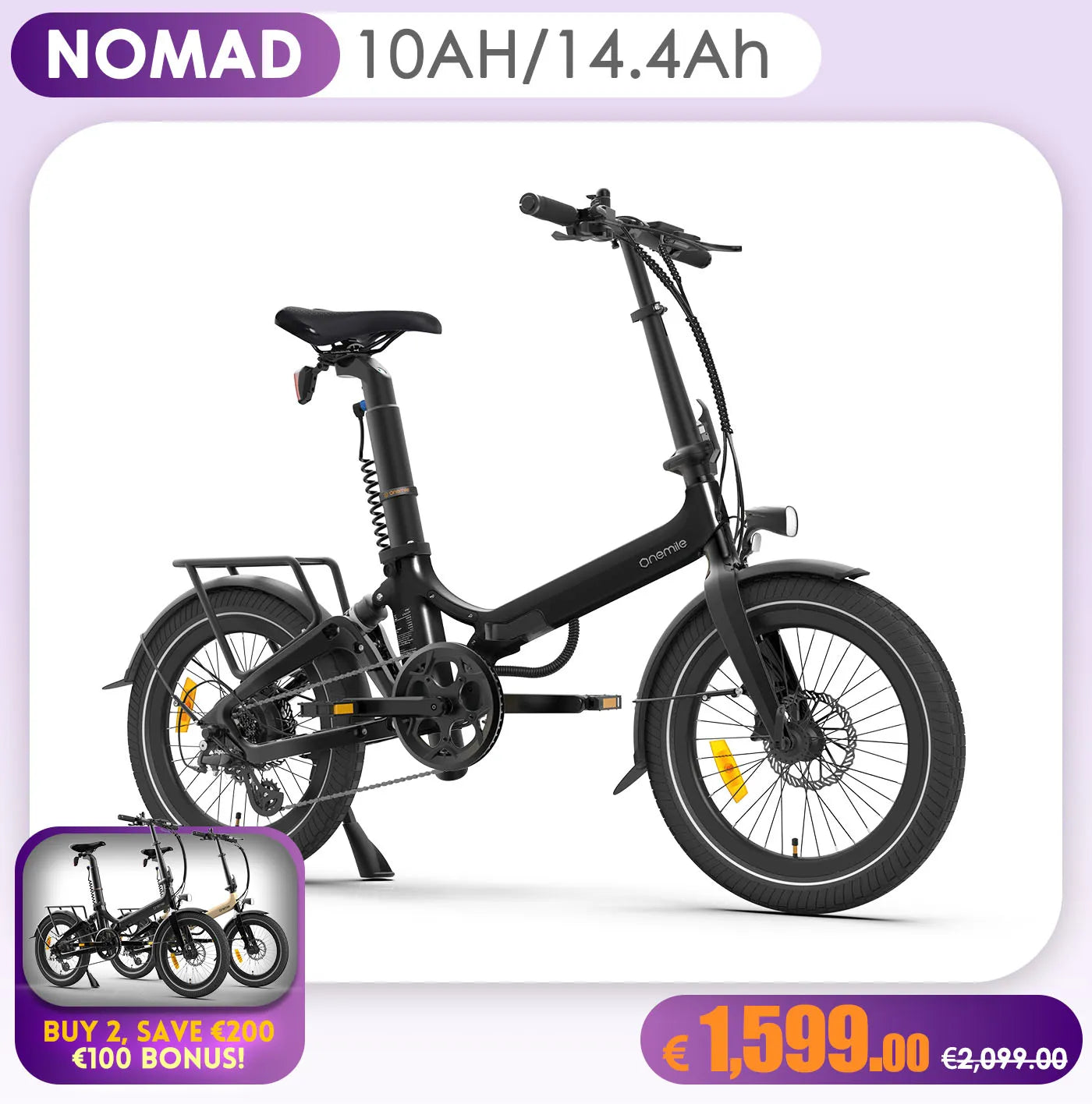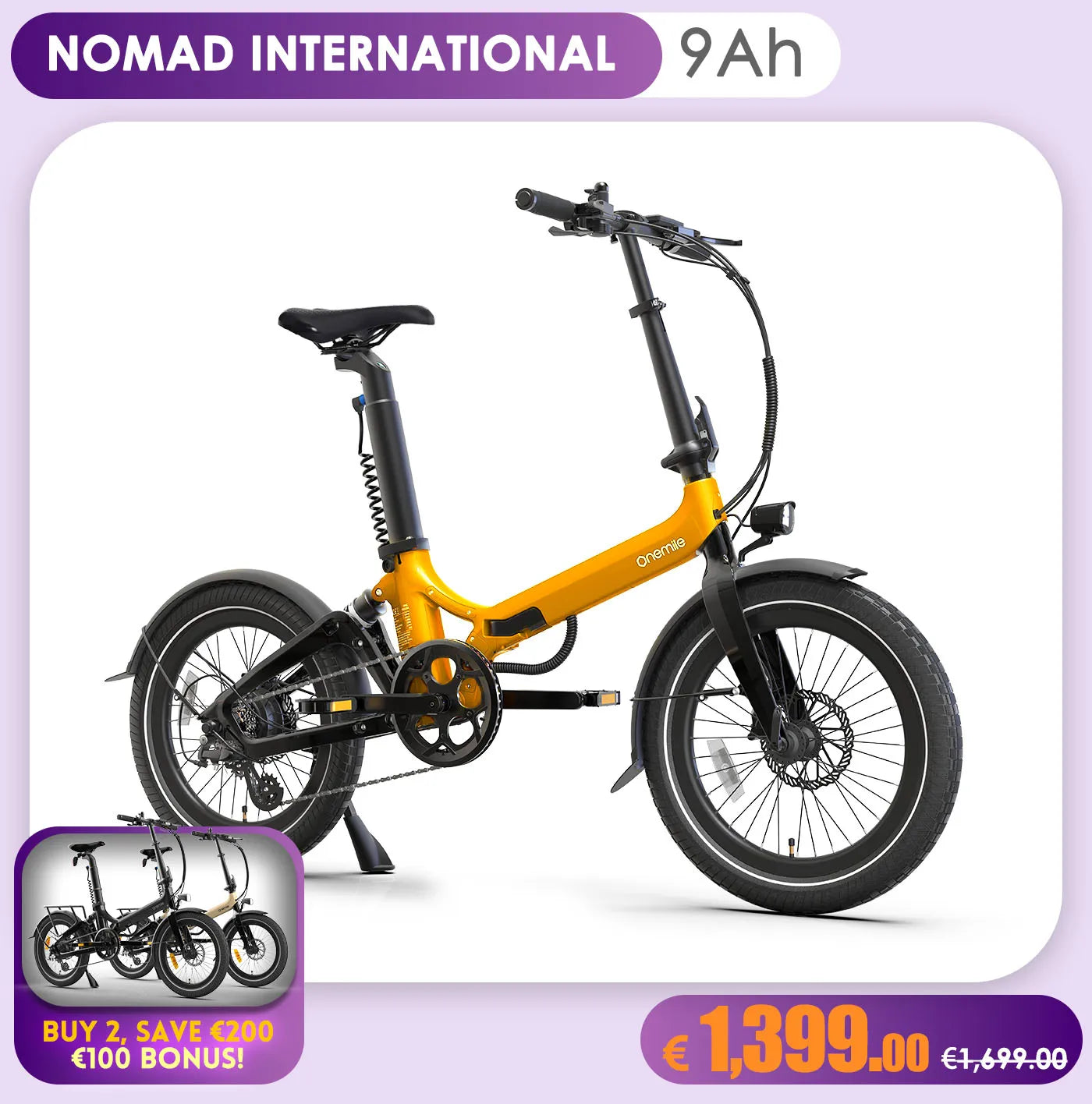In recent years, cycling culture has demonstrated remarkable growth in popularity, gradually becoming an integral part of mainstream lifestyle. Statistical data reveals consistently increasing cycling traffic in weekend destinations such as urban park greenways and waterfront bike paths, while user-generated cycling content and engagement metrics have surged across social media platforms. Against this backdrop, electric folding bicycles - combining the dual advantages of electric-assist functionality and portable folding design - have precisely met the diversified needs of modern urban dwellers for both commuting and recreational mobility, consequently gaining substantial market traction.
As the demand for electric folding bicycles continues to grow, the market has become increasingly saturated with diverse product offerings, presenting consumers with significant selection challenges. Different brands and models exhibit substantial variations in core specifications such as folding efficiency, range, pricing, and riding comfort, making it difficult to make informed decisions based solely on marketing claims or personal recommendations.
Taking two prominent market options as examples—the trending Onemile Nomad and the established classic Brompton—both represent leading models in the electric folding bicycle segment yet differ markedly in technical parameters, product positioning, and ideal use cases. This article provides a comprehensive, data-driven comparison across multiple dimensions, combining objective specifications with real-world usage experiences. Our aim is to equip consumers with rational purchasing insights, enabling them to make optimized choices tailored to their specific needs.
Why Choose an Electric Folding Bike for Your Commute? Here Are the Reasons That Matter to You:
1.Time-efficient Urban Navigation
During urban rush hours, conventional motor vehicles are constrained by traffic congestion and fixed routes, making bike lanes and narrow alleys critical pathways for efficient commuting. Electric folding bicycles, with their space-efficient design (typically reducing volume by over 50% when folded) and agile handling, navigate complex road conditions with ease, improving commute efficiency by approximately 30-50% compared to motor vehicles.
Moreover, their fixed-ownership model eliminates common issues of shared mobility systems—such as uneven station distribution and vehicle availability delays—ensuring reliable commute times. This makes them particularly ideal for punctual, time-efficient travel in urban cores, where traffic unpredictability is a major challenge.
2.Ultra-adaptive Transportability
The foldable feature of electric folding bicycles significantly expands the boundaries of their application scenarios. Most mainstream products support complete vehicle folding within 30 seconds, with a substantial reduction in volume after folding, making them easy to store in limited spaces such as car trunks and office storage areas. This spatial flexibility effectively solves the "last-mile" connection problem in urban commuting, enabling seamless integration of private cars, public transportation, and short-distance cycling. At the same time, the foldable portability allows the vehicle to be easily carried to suburban areas, forming a "4 (wheels) + 2 (wheels)" composite travel mode with cars, which not only meets daily commuting needs but also expands weekend short-trip scenarios, greatly improving the use efficiency of transportation and the travel radius.
3.Economic Viability
From an economic cost perspective, electric folding bicycles are highly competitive in terms of operating expenses. Taking the lithium batteries commonly used in Europe as an example, the electricity cost for a single full charge is approximately €0.3 - €0.8 (fluctuating according to national electricity price standards), with a range of 40-100 kilometers. Compared to public transportation, based on an average monthly pass cost of €85 in Germany and a weekly pass of €22 in France, the annual electricity expenditure for an electric folding bicycle is only 1/10 to 1/5 of public transportation costs. Compared with fuel-powered cars, it can save at least €500 in fuel costs annually. Additionally, electric folding bicycles have relatively low maintenance costs, requiring only regular basic maintenance, which significantly reduces travel expenses over the long term and brings tangible economic benefits to users.
4.Sustainable Healthiness
Against the policy background of Europe's strong promotion of the carbon - neutrality goal, electric folding bicycles, by virtue of their zero - carbon - emission characteristics, have become an important means of practicing green travel. According to the data of the European Environment Agency, if short - distance motor vehicle trips within 10 kilometers are replaced, each electric folding bicycle can reduce about 1.2 tons of carbon dioxide equivalent emissions annually, effectively contributing to the improvement of urban air quality. From a health perspective, about 4 - 7 kilocalories of heat are consumed per minute during cycling. Calculated based on a 20 - minute commuting ride per day, the exercise volume equivalent to a 3 - kilometer jog can be achieved per week. While achieving efficient commuting, it meets the basic exercise requirements recommended by the World Health Organization, forming a virtuous cycle of low - carbon travel and a healthy lifestyle.
In - depth Analysis: Compatibility Comparison between Onemile Nomad and Brompton in the European Market
1.Range Comparison
In terms of technical trade-offs between portability and range, Brompton and OneMile Nomad demonstrate different product logics. Brompton achieves a compact size through a sophisticated folding design, but its range is limited to 30-60 kilometers due to spatial constraints, making it more suitable for short-distance urban commuting scenarios.
OneMile Nomad, on the other hand, expands the travel radius with a large-capacity battery, offering two battery versions (10AH and 14.4AH) with a maximum range of 140 kilometers. A single charge can meet the needs of intercity commuting or suburban cycling, providing users with flexible options for "urban commuting + countryside exploration."

2.Design Comparison
Onemile tends to integrate a sense of futurism, technological sophistication, and fashion, featuring bold and innovative designs with vibrant, striking colors. Its overall style is rather bold and flamboyant, making it suitable for consumers who chase trends and enjoy showcasing their individuality.Brompton, by contrast, adheres to a classic British minimalist style, characterized by clean, smooth lines and a compact, refined appearance. It expresses personality through a rich array of personalized accessories, maintaining a relatively understated and reserved aesthetic. This makes it ideal for those who favor classic styles and prioritize details and personalized customization.
3.Pedal-assist System Comparison
Onemile: Utilizes torque-sensing lithium battery technology, which can intelligently detect the rider's pedaling force and flexibly output assistive power. The power delivery is stable, providing a smooth and natural assisted riding experience.

Brompton: Features an integrated electronic control internal rotor motor, with some models offering 6 or 7-speed gear shifts. The motor is typically installed in the rear wheel, delivering efficient power output. However, if a higher gear is selected at startup, there may be a sudden surge of power.
4.Riding Comfort Comparison
Onemile Nomad is equipped with an ergonomically designed comfortable seat, which effectively reduces pressure on the hips during long rides. The handlebar height and angle are adjustable to accommodate different riders' body sizes and cycling habits. It features a suspension system with a central spring shock absorber, combined with 20-inch wear-resistant wide tires, which can effectively filter road bumps, provide stable riding and good grip, and ensure excellent comfort even on uneven roads.
Brompton electric bicycles offer comfortable seats and feature different types of handlebars to adapt to various riding styles. Some models are equipped with suspension systems that can mitigate vibrations to a certain extent. However, due to their smaller wheel size (typically 16 inches), their comfort when dealing with complex road conditions may be slightly inferior to that of Onemile Nomad.
5.Price Difference Analysis
The pricing of Onemile Nomad is more accessible to the general consumer tier, with its three Nomad series versions ranging from €1,299 to €1,799. This price range is highly friendly to ordinary European consumers, especially suitable for urban commuters seeking high cost-effectiveness. The model balances practicality and economy in design, featuring all core configurations such as electric assist and folding functionality, making it a worthy candidate for the "national-level" electric folding bicycle choice.
In contrast, Brompton electric bicycles exhibit a distinct premium positioning on European e-commerce platforms. The six currently available models span a wide price range, from $3,700 (approximately €3,400) to $4,950 (approximately €4,500). For example, the C-line Explore 6-speed has a recommended retail price of $3,800 (around €3,500), while the top-of-the-line P-line Explore 12-speed approaches $4,950 (approximately €4,550). This pricing structure directly competes with luxury-level items, highlighting Brompton’s craftsmanship premium as a century-old handmade brand—its core customer base consists of seasoned cycling enthusiasts willing to pay for British classic design, artisanal craftsmanship, and the brand’s historical value.
6.Folding Convenience Comparison
The latch design of Onemile Nomad simplifies the folding process by requiring only two latches to be opened, significantly saving time. This interactive approach completely eliminates the visual confirmation and manual adjustment steps required by traditional folding bikes, making it particularly suitable for quick operations in crowded subway stations or rainy weather.
Brompton's precision hinge system, backed by 40 years of technological accumulation, demonstrates excellent mechanical reliability. However, its folding process requires users to sequentially unlock multiple sets of latches and manually align frame components, resulting in a higher complexity of operational steps. Actual measurement data shows that even skilled users take an average of 45 seconds to complete the entire folding process. In high-frequency commuting scenarios, the efficiency disadvantage becomes increasingly evident with frequent use.Folding Convenience Comparison
In the European electric folding bicycle market, OneMile and Brompton represent the product paths of pragmatism and classicism, respectively. OneMile has established a cost-effective commuting solution through modular design, long battery life, and affordable pricing. Its convenient latch system and modern design precisely cater to the functional needs of high-frequency commuting.
Brompton, by contrast, has established a market positioning as a "mechanical artwork" through its technically refined folding structure and iconic retro design accumulated over years of craftsmanship. Its higher price range targets consumers with higher requirements for material craftsmanship, brand history, and the ritual (sense of ritual) of cycling.
The differentiation between the two does not lie in product superiority or inferiority but in the precise stratification of user needs: the former focuses on "instrumental rationality," emphasizing commuting efficiency and usage costs; the latter takes "emotional value" as its core, highlighting design inheritance and community identity. In the European market, this positioning divergence essentially responds to two consumption logics: "transportation tool" and "lifestyle symbol." The key for users to choose lies in the matching degree between product characteristics and their own travel scenarios and value preferences.











Leave a comment
All comments are moderated before being published.
This site is protected by hCaptcha and the hCaptcha Privacy Policy and Terms of Service apply.